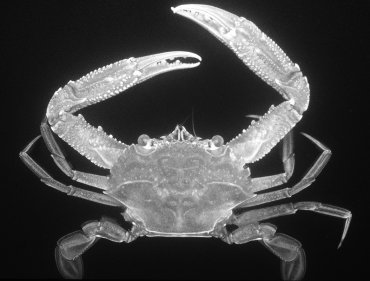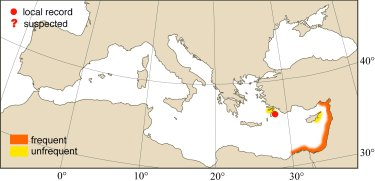
|
Relevant Synonyms
Misidentification
|
|
| photo : Bella Galil |
|
SHORT
DESCRIPTION
color :
carapace dull brownish-grey save for cream-coloured margins and raised granules. Inner margins of cheliped fingers mustard-yellow. Pereopods brownish-grey with violet-blue margins.
common size :
males CL 3 cm, females CL 2.5 cm. |
DISTINGUISHING CHARACTERISTICS
BIOLOGY / ECOLOGY
habitat : |
|
1st
MEDITERRANEAN RECORD
|

|
|
DISTRIBUTION
|
ESTABLISHMENT SUCCESS
speculated reasons for success :
|
|
|
MODE OF
INTRODUCTION |
IMPORTANCE TO
HUMANS |
|
KEY
REFERENCES
|
|
|
 Charybdis (Goniohellenus) hoplites var. longicollis Leene, 1938
Charybdis (Goniohellenus) hoplites var. longicollis Leene, 1938